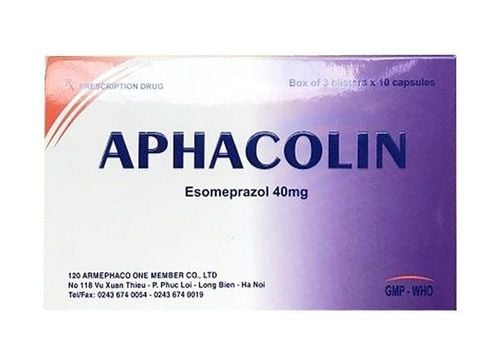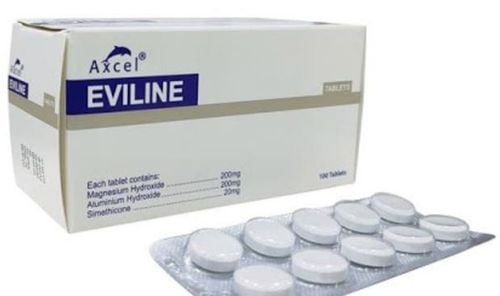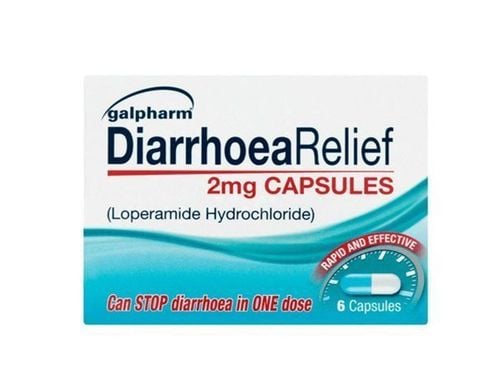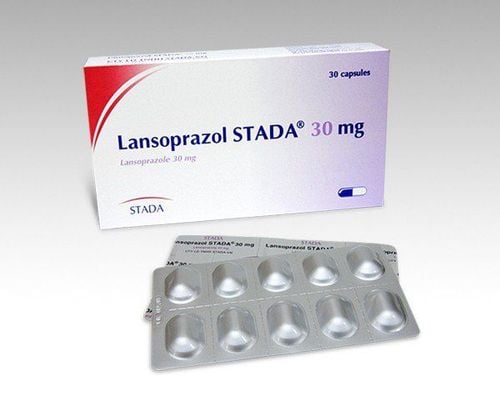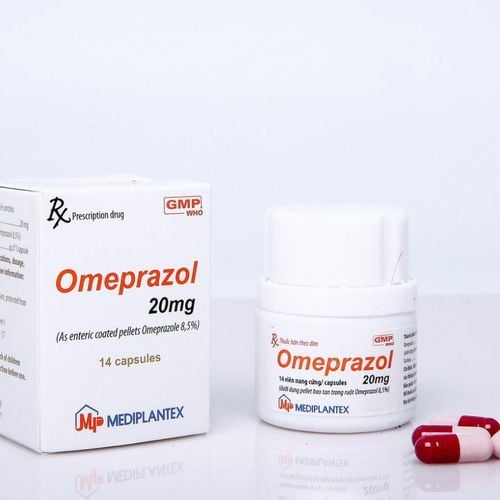This is an automatically translated article.
Nesteloc 20 is a product containing the main active ingredient, Esomeprazole and is indicated for the treatment of patients with peptic ulcer disease or gastroesophageal reflux disease.
1. What is Nesteloc 20?
Nesteloc 20 is indicated for the treatment of gastroesophageal reflux syndrome - oesophagitis, peptic ulcer disease thanks to its main ingredient, Esomeprazole. The drug is produced in the form of hard capsules containing Esomeprazole magnesium dihydrate enteric coated and packaged in a box of 3 blisters x 10 tablets.
2. Uses of Nesteloc 20
Nesteloc 20 is indicated in the treatment of a number of diseases such as:
Gastroesophageal reflux syndrome. Peptic ulcer disease - duodenum. Treatment of gastric and duodenal ulcers caused by Helicobacter pylori and prevention of recurrence risk in patients with peptic ulcers infected with Helicobacter pylori. Prophylaxis and treatment of gastric - duodenal ulcers caused by the use of non-steroidal anti-inflammatory drugs.
3. Pharmacokinetics and pharmacodynamics of Nesteloc 20
Nesteloc 20 has the effect of reducing gastric acid secretion by the mechanism of irreversible and highly selective binding to the proton pump thanks to the presence of esomeprazole in the S-isomer form of omeprazole. In the parietal cells of the gastric mucosa, the drug has a specific affinity for the enzyme H+K+- ATPase of the proton pump. Therefore, Nesteloc 20 inhibits both basal acid secretion because this enzyme controls the final stage of gastric acid secretion.
Esomeprazole is rapidly absorbed after entering the body and peak plasma concentrations are achieved after 1-2 hours. The presence of food in the body slows and reduces the absorption of the drug, so esomeprazole should be taken 1 hour before a meal.
Esomeprazole is relatively well bound to plasma proteins with 97%. The drug is extensively metabolised in the liver by the cytochrome P450 isoenzyme CYP2C19 system to inactive hydroxy and demethyl derivatives.
4. How to use Nesteloc 20
The drug is taken orally and should be swallowed whole, avoiding chewing or crushing the drops. The drug should be taken before meals and preferably before breakfast.
Dosage will vary depending on the specific case such as:
Gastroesophageal reflux syndrome - The recommended starting dose in the treatment of this condition is from 20 to 40mg per day. The duration of oral administration can be extended beyond 4 - 8 weeks in patients who have not progressed after a period of taking the drug.
For oral maintenance or disease without esophageal ulcer, a lower dose of 20 mg per day may be used.
Peptic ulcer disease - duodenal ulcer caused by HP Often combined with amoxicillin and clarithromycin. The usual dose for Nesteloc is 20mg esomeprazole twice a day for 7 days or esomeprazole 40mg once a day for 10 days.
Gastric ulcer disease - duodenal ulcer caused by using non-steroid anti-inflammatory drugs Patients need to take continuously for 6 months with the required dose of 20mg or 40mg x 1 time / day.
Patients with hepatic impairment Patients with mild to moderate hepatic impairment may not require dose adjustment. People with severe liver failure should not use more than 20mg/day.
The above dosage is for reference only. Depending on the actual condition of the disease and the condition of each patient, the doctor will prescribe the appropriate dose.
5. Some notes when using Nesteloc
Some cases need to be cautious when using the drug such as:
Symptoms to watch out for such as: Significant unexplained weight loss, difficulty swallowing, vomiting blood, recurrent vomiting, or black blood in the stool . In patients with peptic ulcer disease, the diagnosis of gastric ulcer due to malignancy should be excluded because treatment with esomeprazole may reduce symptoms and delay diagnosis. In case of prolonged use of the drug should be careful because it can cause atrophic gastritis. Consult a doctor before use in children under 18 years of age, people with liver disease, pregnant or lactating women. Using esomeprazole can cause headache, dizziness, and lightheadedness in rare cases, so it should be used with caution while driving or operating machinery.
6. Interactions between Nesteloc and other drugs
Esomeprazole has the characteristics of inhibiting acid secretion, increasing gastric pH. Therefore, it may affect the absorption of pH-dependent drugs such as iron salts, digoxin, and ketoconazole. Concomitant administration of clarithromycin and esomeprazole amoxicillin may increase blood levels of 14-hydroxy clarithromycin and esomeprazole. Drugs metabolized by the cytochrome P450 isoenzyme CYP2C19 in the liver may interact with esomeprazole. Co-administration of nesteloc 30 and diazepam may result in a 45% decrease in clearance of diazepam. The combination of esomeprazole and clopidogrel should only be used when clearly needed because of esomeprazole's ability to reduce the activity of enzymes that convert clopidogrel to the active form. Nesteloc 20 is a product containing the main active ingredient, Esomeprazole, and is indicated for the treatment of patients with peptic ulcer disease or gastroesophageal reflux disease. To ensure the effectiveness of treatment and avoid side effects, patients need to take the medicine exactly as directed by the doctor, professional pharmacist.Follow Vinmec International General Hospital website to get more health, nutrition and beauty information to protect the health of yourself and your loved ones in your family.
Please dial HOTLINE for more information or register for an appointment HERE. Download MyVinmec app to make appointments faster and to manage your bookings easily.




